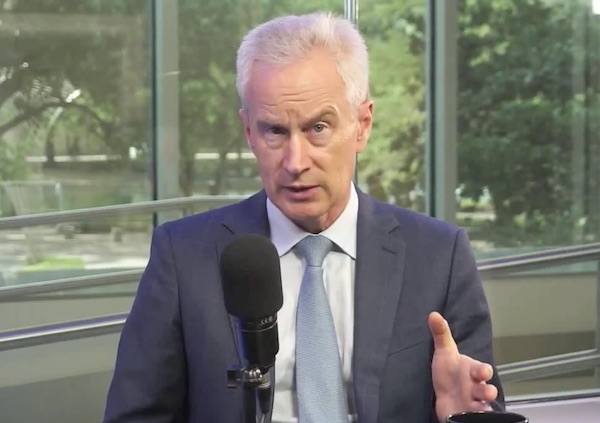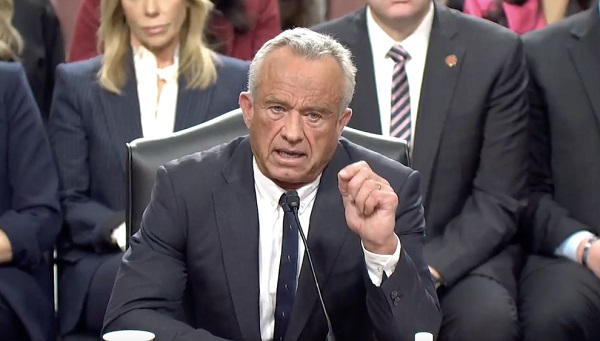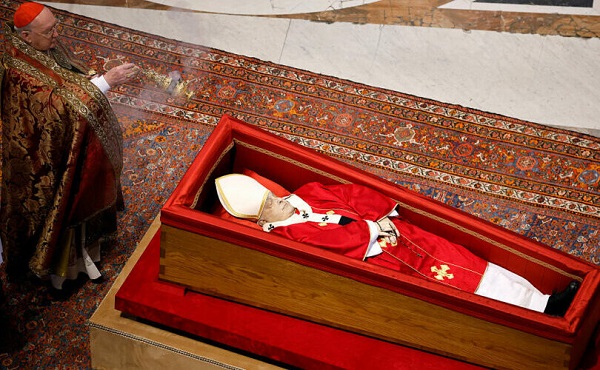COVID-19
My kid has covid. Now what do we do? – Dr. Peter McCullough Interview Part 2

This may seem a little strange because I’m going to willingly breech my own doctor / patient confidentiality. I’m not sure what my obligation is here but I know doctors are guided by the Health Information Act (HIA) and the Personal Information Protection Act (PIPA). Nowadays though we all know that every time I go to coach my son’s hockey team I have to divulge my health information in front of whoever happens to be near me in front of a stranger in the entrance of a hockey rink. In other words, I’m guessing I’ll get away with this.
Recently I asked my doctor the same question we all should be asking our doctors. “If I get a positive covid result and I’m symptomatic, can I call you and ask for some kind of treatment?”
My doctor answered in the way I suspect most doctors would. He looked at me quizzically and said “You mean in hospital? You’ll be treated by the doctors there.”
That’s not what I meant and I said, “No. I mean if I have symptoms. Will you offer me treatment to help me stay ‘out’ of the hospital in the first place?”
My doctor is a pretty good egg and I like him and all but from his response I know that if (when) I get covid I am going to be in the same position as almost every other Albertan. I will go home and isolate and pray that this doesn’t get serious.
I don’t know about you, but as far as I’m concerned that doesn’t seem good enough. I’d like to think there are treatments out there and maybe that’s why I really like to research articles with data regarding Ivermectin and Hydroxychloroquine (not to mention Zinc and vitamins D, and C). Months ago these were just stories. Then I started to meet people who told me about a family member or friend who quickly bounced back after taking treatment for covid. Then I met a couple of those people myself. Now I’m convinced there’s something to all these articles I’m reading.
The studies say (so does my experience with people I know) that these treatments don’t work every time. However, if you could save even 10 percent of lives and keep even 10 percent of people out of the hospital by taking an inexpensive drug that has no serious side effects, why wouldn’t you promote the living (beep) out of that? Seriously? What if it was 20 or 30 or 50%. It’s incredible to me that so many people will turn their noses at something like Ivermectin because someone on TV called it ‘horse dewormer’. For my opinion of the people who block their ears and yell “HORSE DEWORMER” see here. If you’ve been doing that, please stop. I guarantee you someone you know and maybe even love has either taken Ivermectin, or they’re going to want to some day. You may not know there are actually quiet a few studies. Maybe you haven’t met anyone who swears they turned around within hours of getting treatment. But trust me, the people making decisions for us (the politicians at the very top and even more importantly the health officials) know there are treatments out there. They’ve just chosen not to pursue them.
While those who supposedly follow the science denounce studies that looked extremely promising but were really too small, or studies that were done so far away that we simply don’t know enough to give them credence, other people who also supposedly follow the science have found some very interesting data themselves. Just check out this beauty from the American Journal of Therapeutics, called Ivermectin for Prevention and Treatment of COVID-19 Infection, published back on June 21 of 2021. This is way better than 10%. This looks really promising. This is also being completely ignored by our political leaders. Don’t ask me why. Seriously don’t ask unless you have at least 2 tall boys.
The bottom line is, after all I’ve read and seen and the people I’ve met, I refuse to believe there is no such thing as a treatment for covid. I know they’re coming out with new ones for this specific purpose, but I’m convinced by data that there are repurposed drugs that are already doing the job. Not perfectly of course, but far better than say .. nothing.
This really gets me when I think about my children. The thought of one of my kids getting covid and then becoming symptomatic, and then getting really ill, and then not being able to access treatment when I’m pretty sure there’s something out there that would help them… That’s not a very nice thought. It became real for me recently when a good friend told me his son (same age as my son) tested positive. He knows I’m keeping up on this as much as I can and he texted to let me know (and I think ask if I could recall some of the things I’ve said to him about treatment). I shared the video I’m sharing here, below. I also emailed links to two very similar resources for us regular folks who can only talk about the people who actually follow the science. I’ll include these links because I think they’re REALLY worth looking at. Especially because there’s literally nothing else to look at when someone in your household gets a positive test result. Here’s the Guide to Home Based Treatment for Covid from the American Association of Physicians and Surgeons, and here’s the Guide to Covid Early Treatment from a group of US doctors on their website TruthForHealth.
The video below refers only to children but the two “home treatment” guides are helpful for people at any age. I hope you never need this kind of info, but personally I don’t think we’re going to achieve the magical zero covid even if we take all the vaccine in the world. This very nasty virus is here to stay. The way we’re going to get back to living like we should be, is with EARLY treatment.. as in BEFORE we’re deathly ill in the hospital. I suspect we’re about 6 months away from recognized and emergency approved early treatment pills that will eventually swoop in and save the day for the vast majority. But seriously, who cares if you put out a fire with water, or retardant, or a cut line, or by stomping on it with your foot? The important thing is that you start fighting fire as soon as you can. For me? I’m happy to start by throwing a little dirt on this campfire while I wait for the water bombers.
Thanks for checking this out. If you need a bit more convincing that early treatment even exists.. check out this next article.
2025 Federal Election
Conservatives promise to ban firing of Canadian federal workers based on COVID jab status

From LifeSiteNews
The Conservative platform also vows that the party will oppose mandatory digital ID systems and a central bank digital currency if elected.
Pierre Poilievre’s Conservative Party’s 2025 election platform includes a promise to “ban” the firing of any federal worker based “solely” on whether or not they chose to get the COVID shots.
On page 23 of the “Canada First – For A Change” plan, which was released on Tuesday, the promise to protect un-jabbed federal workers is mentioned under “Protect Personal Autonomy, Privacy, and Data Security.”
It promises that a Conservative government will “Ban the dismissal of federal workers based solely on COVID vaccine status.”
The Conservative Party also promises to “Oppose any move toward mandatory digital ID systems” as well as “Prohibit the Bank of Canada from developing or implementing a central bank digital currency.”
In October 2021, the Liberal government of former Prime Minister Justin Trudeau announced unprecedented COVID-19 jab mandates for all federal workers and those in the transportation sector. The government also announced that the unjabbed would no longer be able to travel by air, boat, or train, both domestically and internationally.
This policy resulted in thousands losing their jobs or being placed on leave for non-compliance. It also trapped “unvaccinated” Canadians in the country.
COVID jab mandates, which also came from provincial governments with the support of the federal government, split Canadian society. The shots have been linked to a multitude of negative and often severe side effects, such as death, including in children.
Many recent rulings have gone in favor of those who chose not to get the shots and were fired as a result, such as an arbitrator ruling that one of the nation’s leading hospitals in Ontario must compensate 82 healthcare workers terminated after refusing to get the jabs.
Beyond health concerns, many Canadians, especially Catholics, opposed the injections on moral grounds because of their link to fetal cell lines derived from the tissue of aborted babies.
COVID-19
RFK Jr. Launches Long-Awaited Offensive Against COVID-19 mRNA Shots

 Nicolas Hulscher, MPH
Nicolas Hulscher, MPH
As millions of Americans anxiously await action from the new HHS leadership against the COVID-19 mRNA injections—injected into over 9 million children this year—Robert F. Kennedy Jr. has finally gone publicly on the offensive:
Let’s go over each key point made by RFK Jr.:
The recommendation for children was always dubious. It was dubious because kids had almost no risk for COVID-19. Certain kids that had very profound morbidities may have a slight risk. Most kids don’t.
In the largest review to date on myocarditis following SARS-CoV-2 infection vs. COVID-19 vaccination, Mead et al found that vaccine-induced myocarditis is not only significantly more common but also more severe—particularly in children and young males. Our findings make clear that the risks of the shots overwhelmingly outweigh any theoretical benefit:
The OpenSAFELY study included more than 1 million adolescents and children and found that myocarditis was documented ONLY in COVID-19 vaccinated groups and NOT after COVID-19 infection. There were NO COVID-19-related deaths in any group. A&E attendance and unplanned hospitalization were higher after first vaccination compared to unvaccinated groups:
So why are we giving this to tens of millions of kids when the vaccine itself does have profound risk? We’ve seen huge associations of myocarditis and pericarditis with strokes, with other injuries, with neurological injuries.
The two largest COVID-19 vaccine safety studies ever conducted, involving 99 million (Faksova et al) and 85 million people (Raheleh et al), confirm RFK Jr.’s concerns, documenting significantly increased risks of serious adverse events following vaccination, including:
- Myocarditis (+510% after second dose)
- Acute Disseminated Encephalomyelitis (+278% after first dose)
- Cerebral Venous Sinus Thrombosis (+223% after first dose)
- Guillain-Barré Syndrome (+149% after first dose)
- Heart Attack (+286% after second dose)
- Stroke (+240% after first dose)
- Coronary Artery Disease (+244% after second dose)
- Cardiac Arrhythmia (+199% after first dose)
And this was clear even in the clinical data that came out of Pfizer. There were actually more deaths. There were about 23% more deaths in the vaccine group than the placebo group. We need to ask questions and we need to consult with parents.
Actually, according to the Pfizer’s clinical trial data, there were 43% more deaths in the vaccine group compared to the placebo group when post-unblinding deaths are included:
We need to give people informed consent, and we shouldn’t be making recommendations that are not good for the population.
Public acknowledgment of the grave harms of COVID-19 vaccines signals that real action is right around the corner. However, we must hope that action is taken for ALL age groups, as no one is spared from their life-reducing effects:
Alessandria et al (n=290,727, age > 10 years): People vaccinated with 2 doses lost 37% of life expectancy compared to the unvaccinated population during follow-up.
Epidemiologist and Foundation Administrator, McCullough Foundation
Please consider following both the McCullough Foundation and my personal account on X (formerly Twitter) for further content.
-

 2025 Federal Election2 days ago
2025 Federal Election2 days agoMark Carney Wants You to Forget He Clearly Opposes the Development and Export of Canada’s Natural Resources
-

 International1 day ago
International1 day agoPope Francis’ body on display at the Vatican until Friday
-

 Business2 days ago
Business2 days agoHudson’s Bay Bid Raises Red Flags Over Foreign Influence
-

 2025 Federal Election2 days ago
2025 Federal Election2 days agoCanada’s pipeline builders ready to get to work
-

 2025 Federal Election1 day ago
2025 Federal Election1 day agoFormer WEF insider accuses Mark Carney of using fear tactics to usher globalism into Canada
-

 2025 Federal Election11 hours ago
2025 Federal Election11 hours agoCarney’s Hidden Climate Finance Agenda
-

 COVID-191 day ago
COVID-191 day agoRFK Jr. Launches Long-Awaited Offensive Against COVID-19 mRNA Shots
-

 2025 Federal Election1 day ago
2025 Federal Election1 day agoCanada’s press tries to turn the gender debate into a non-issue, pretend it’s not happening










